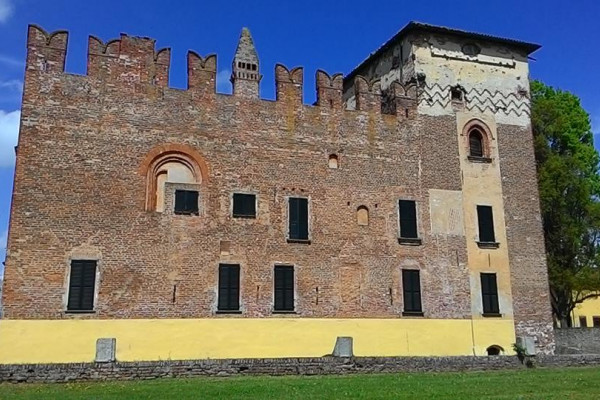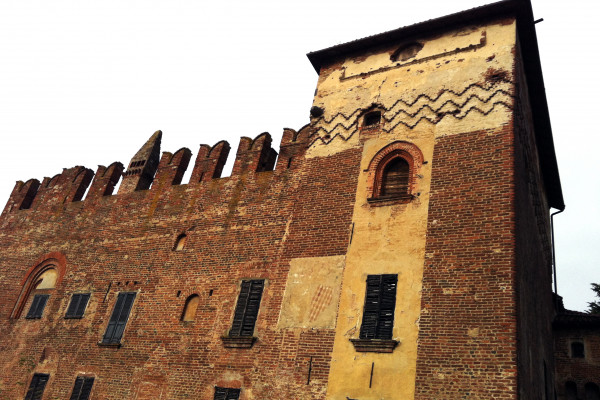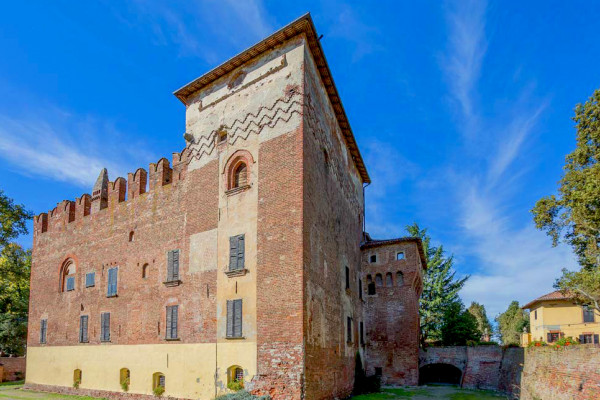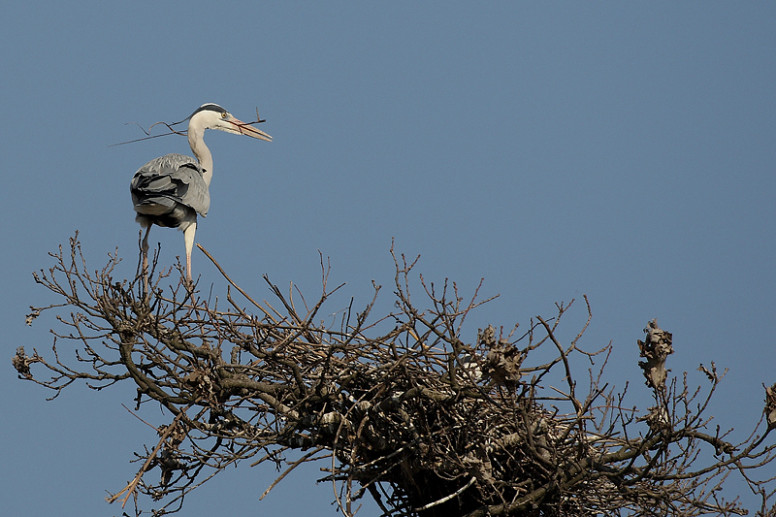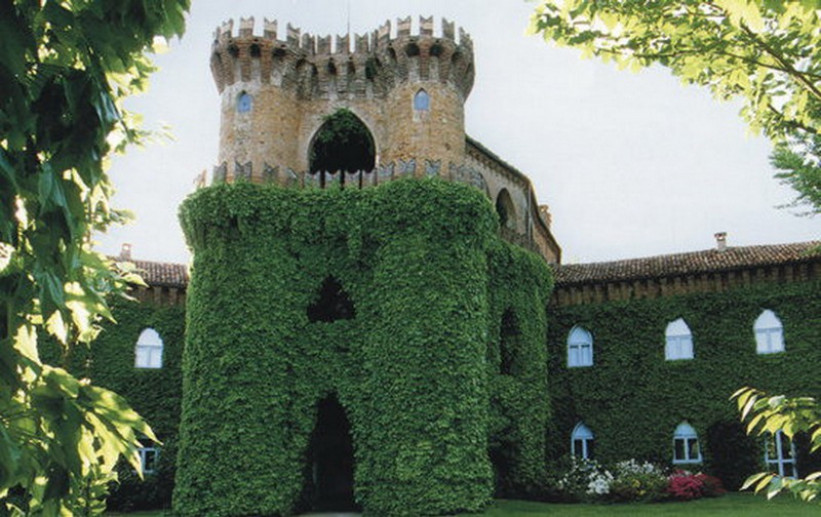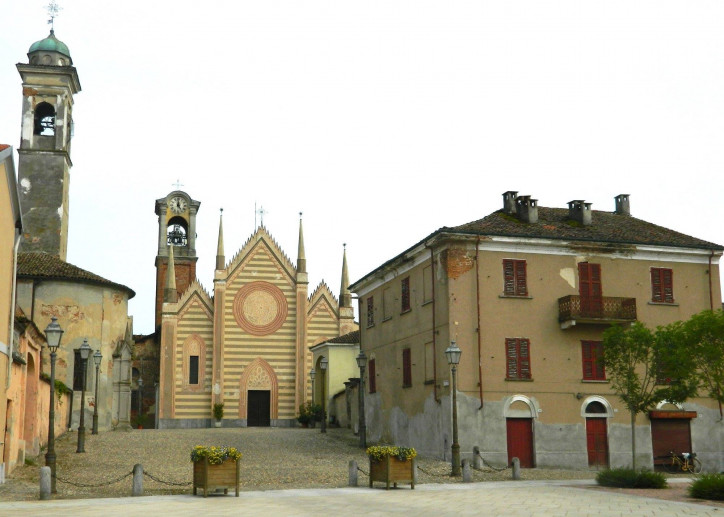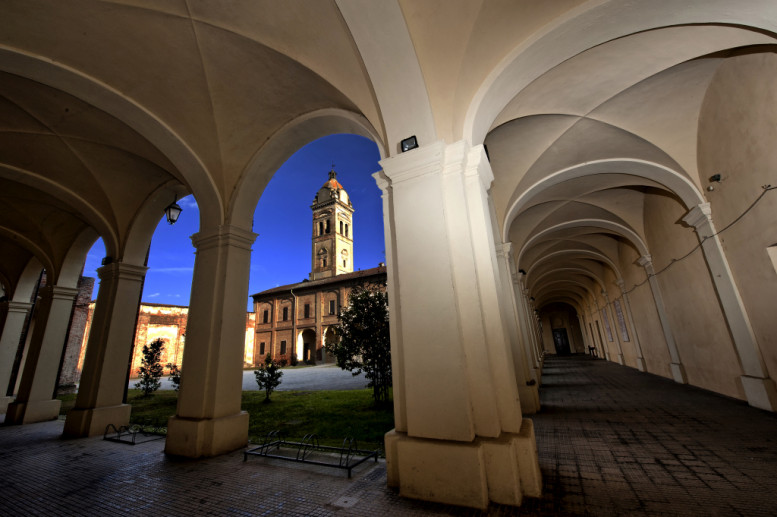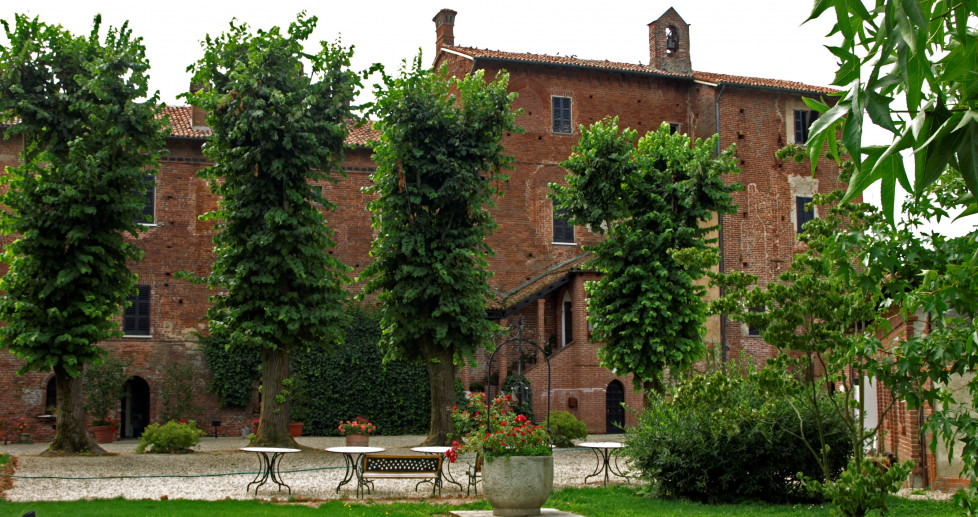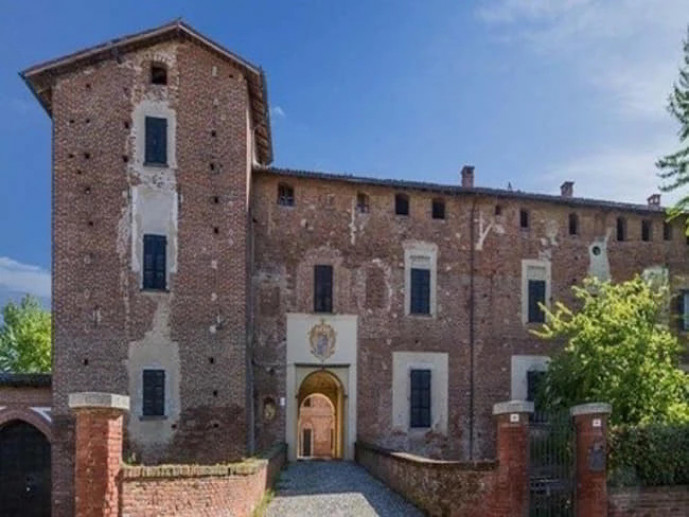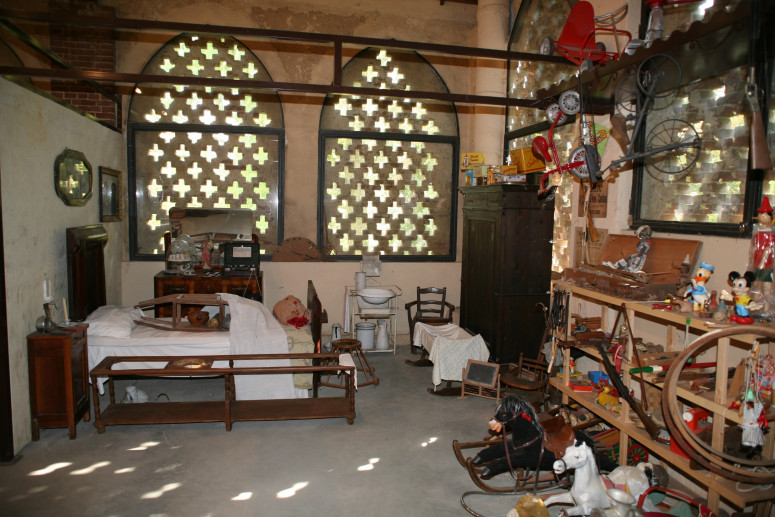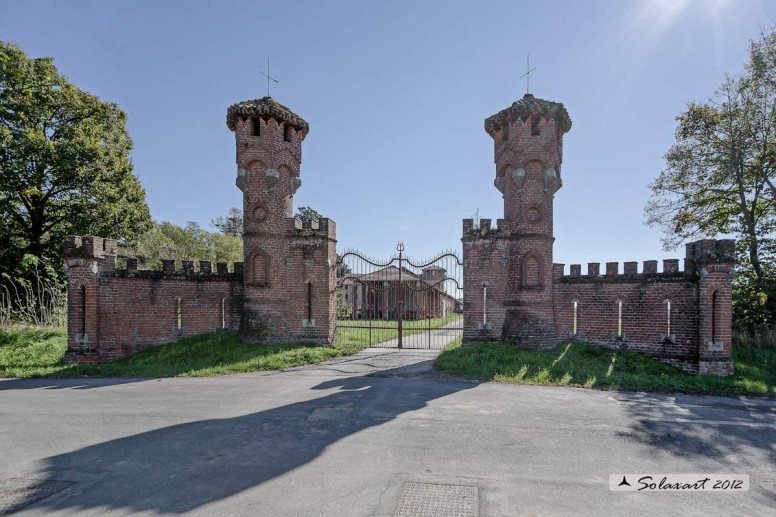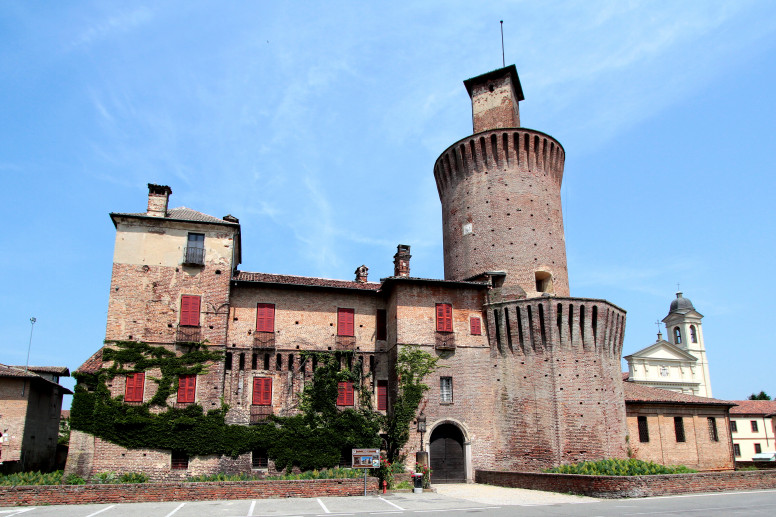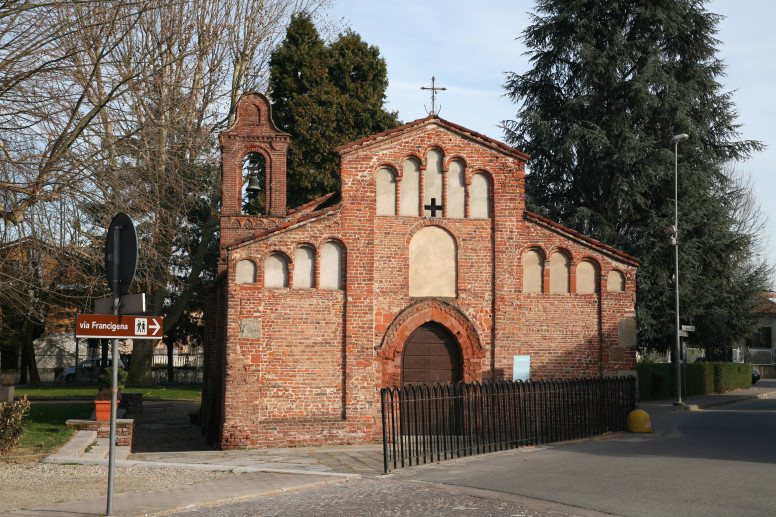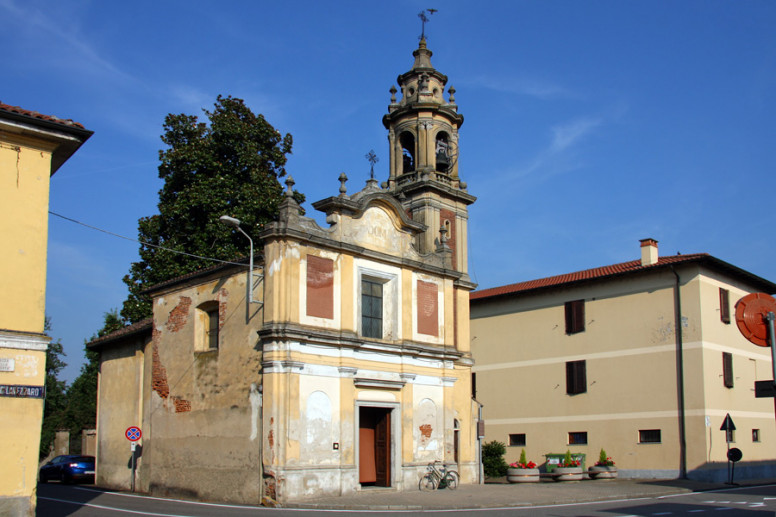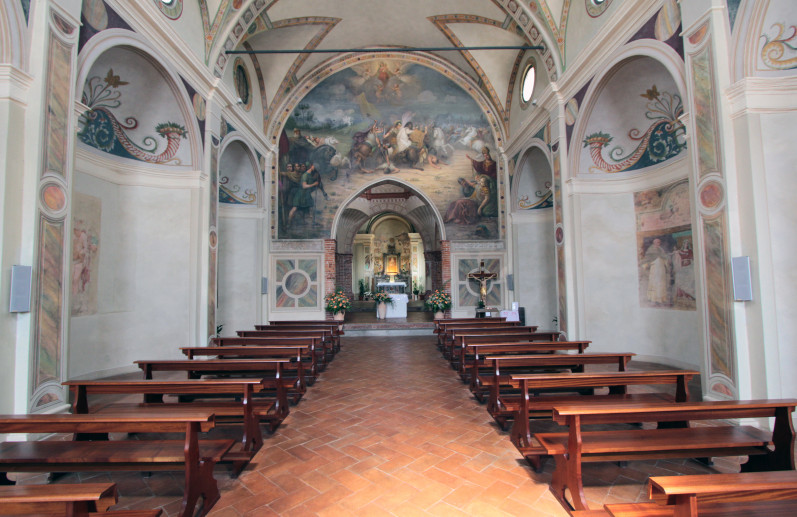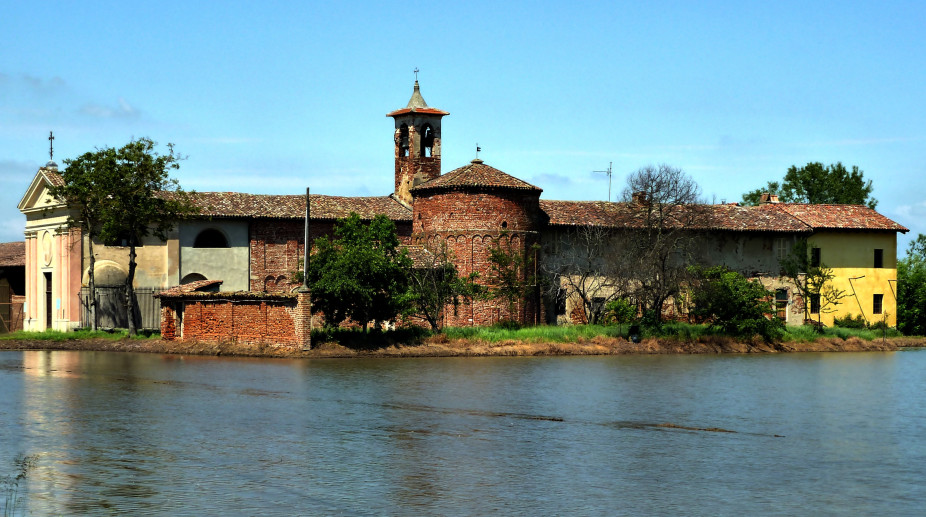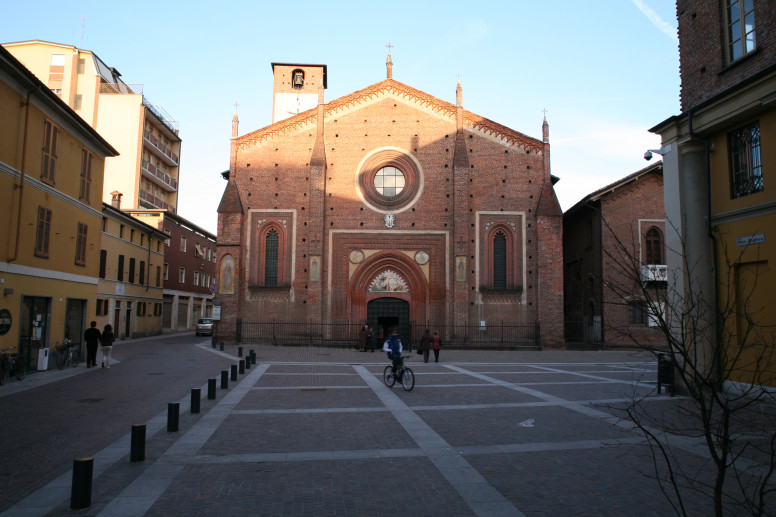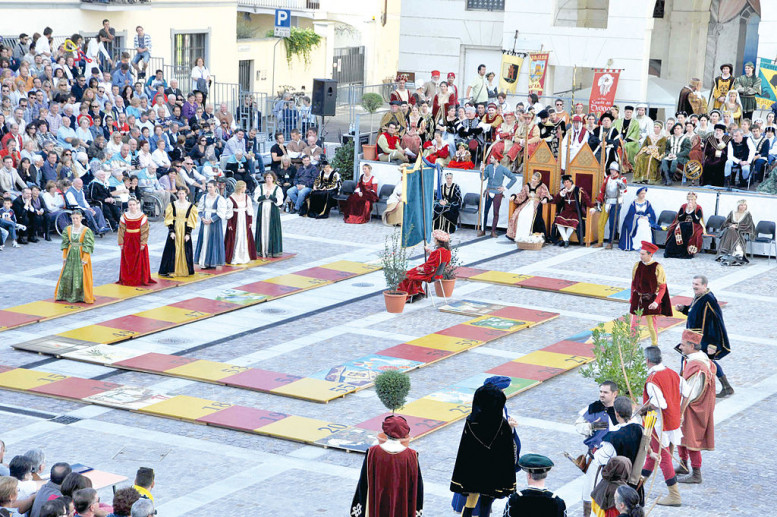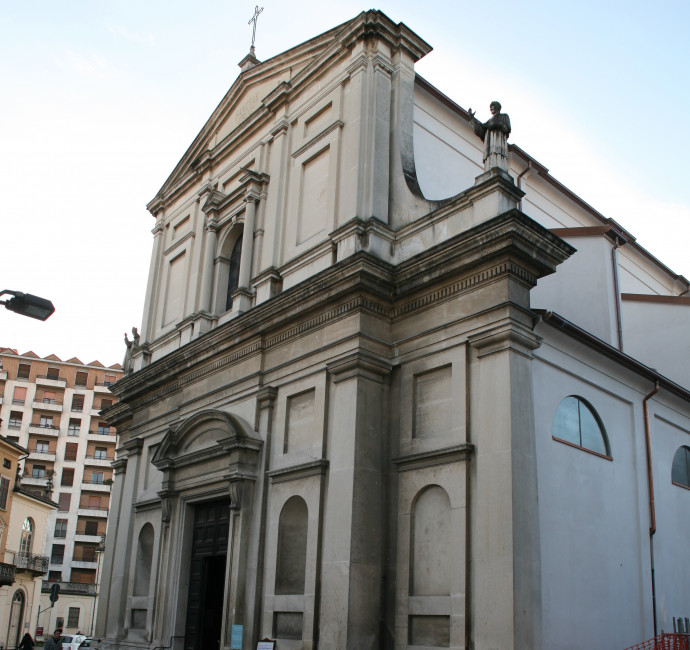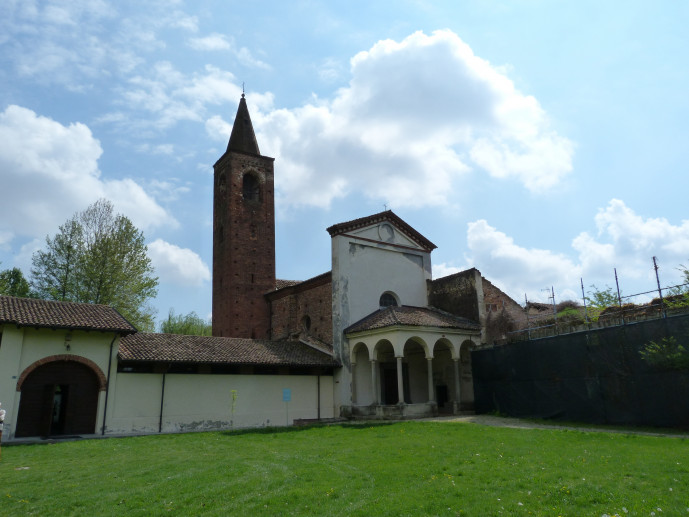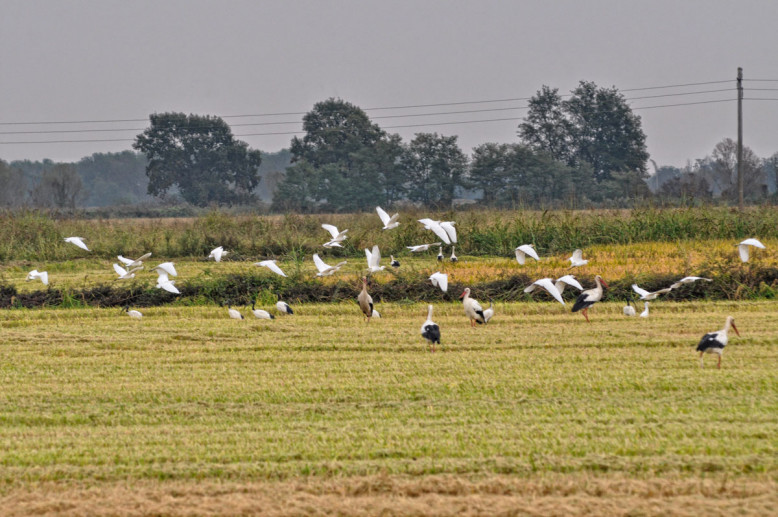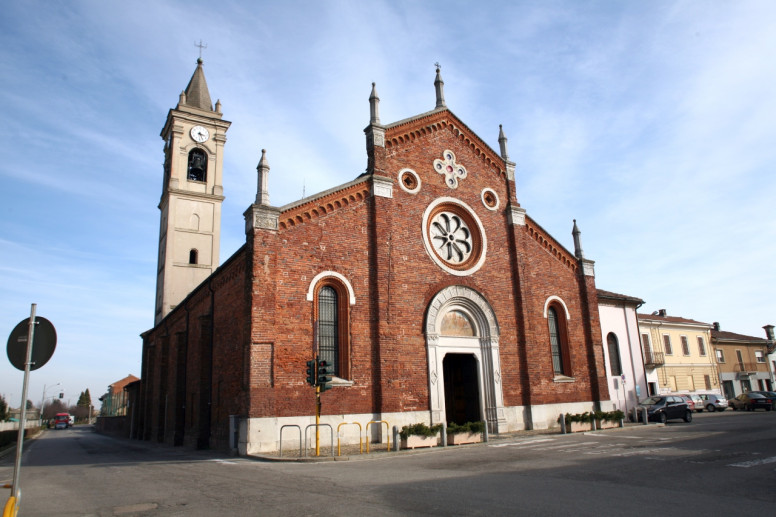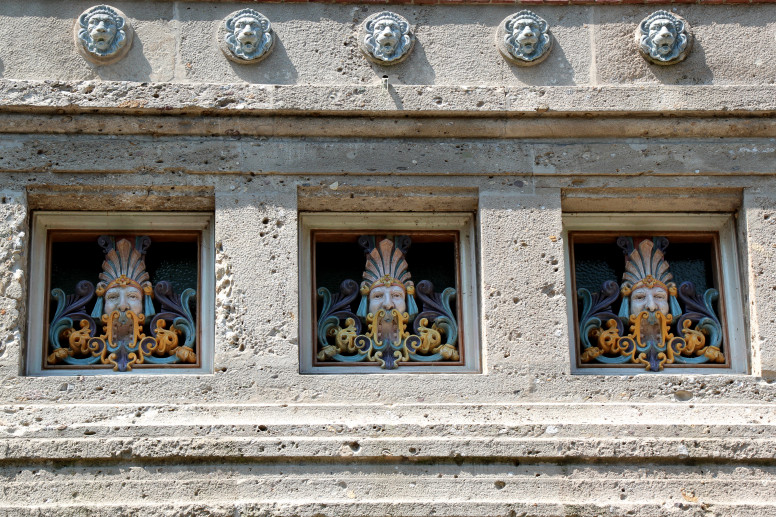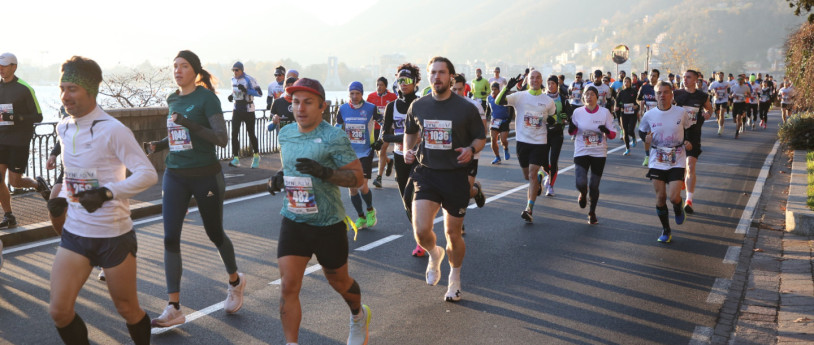- Art & Culture
Gallarati Scotti Castle
Cozzo was an important station for changing horses during the Roman era, located on the imperial road leading towards the Cottian Alps (hence the name of the locality). In the 3rd century AD, it had the status of a municipal city, overseeing the entire area of present-day Lomellina. With the fall of the Roman Empire, Cozzo entered a long period of decline, until Benedictine monks from Cluny founded an abbey there and began reclaiming the land.
In the Middle Ages, due to its proximity to the Sesia river, Cozzo was endowed with a strong castle, rebuilt by the Milanese in 1214 and renovated in the 15th century when it became the property of the Gallarati family.
The Gallarati Scotti Castle was rebuilt around the mid-14th century, replacing the previous 11th-century fortified structure and surrounded by the buildings of the old settlement. In the following century, Francesco Sforza granted the castle to the Gallarati family, who added an additional floor, introduced the Ghibelline merlons, and renovated the entrance tower as a "rivellino" (a defensive outwork). Inside, the monochrome painting of the Leonardesque school depicting the famous "Madonna of Humility" is preserved.
An interesting historical note: one of the rooms houses a copy of the extraordinary document, the Tabula Peuntingeriana, which is fundamental for our contemporary understanding of the geography of the ancient world.
The Tabula, the only surviving cartographic representation of the Roman road network, places Cuttiae, Cozzo, as an intermediate stop between Lomello and Vercelli. The graphic representation of Cuttiae in this table is not limited to just a caption, but is enhanced by an icon depicting two adjacent buildings, typically used for important locations related to ancient roadways (Mediolanum, Milan, for example, is shown with the same icon).
The data from written sources is confirmed by archaeological findings: from Cozzo comes a milestone, displayed at the museum in real size (1.90 meters high and 90 cm in circumference), discovered in 1802 two kilometers from Cozzo. It bears the name of Emperor Antoninus Pius, followed by the numeral LVIII, indicating the distance between Cuttiae and Mediolanum, identified as the "caput viae" of the road that passed through Lomellina.
The Via Regina is the main theme of the museum tour set up inside the Gallarati Scotti Castle.
Visitors are invited by the guides of The Original History Walks® circuit to walk the streets of the past and overlay them with those of the present to imagine a common and more sustainable future.
The Gallarati Scotti Castle is a museum-laboratory in constant evolution and transformation. It houses the Bottega di Leonardo, a team of young professionals, including hydraulic engineers, theoretical physicists, music experts, interpreters, and nutritionists, who, in both Italian and English, will engage groups, schools, and families, inviting them to return repeatedly to walk a path together.
Throughout the journey, enhanced by explanatory panels in Italian and English, augmented and virtual reality installations, Oculus, and other interactive tools will remind us how designing the future is based on a deep awareness and understanding of the past. Among other installations, visitors will be able to interact with an avatar administrator (the actor Davide Ferrari) who, at the desk from which the castle’s lands and workforce were managed for centuries, will narrate the path of just administration.
The beautiful monochrome fresco of the King’s Room, depicting the historic meeting in 1499 in Cozzo between King Louis XII of France, will come to life and animate, thanks to augmented reality technology, right before the eyes of visitors at the moment of the arrival of the two processions: on one side, Louis XII escorted by halberdiers, accompanied by cardinals Giorgio d’Amboise, Giuliano Della Rovere, and another character believed to be Cesare Borgia. On the opposite side, the hostess Maria Percivalle Roero, wife of Pietro Gallarati, with her husband, ladies-in-waiting, and young knights. It is a beautiful snapshot of the time when political dialogue prevails over conflict and attempts to reconcile seemingly irreconcilable disputes—an important message for today.
Pietro Gallarati, the first lord of Cozzo, was indeed a great diplomat with a distinguished career lasting nearly fifty years. A close friend of the ducal family, so much so that Galeazzo Maria, Francesco’s son, would always call him "uncle," recognizing his role as an authoritative yet affectionate guide. He was a court counselor as early as 1452 and was entrusted with significant diplomatic roles at Italian and foreign courts, in Venice, Mantua, Naples, France, Rome, and Monferrato. He participated in peace negotiations and arranged political marriage pacts, such as the one between Isabella d’Aragona and Gian Galeazzo Maria Sforza, future heir of the duchy, where Leonardo was the organizer of the Festa del Paradiso. It was Pietro Gallarati who went to Florence with Cicco Simonetta, the then-owner of the Sartirana Castle, to convince Leonardo to move to Milan to the Sforza court and begin, among other things, the remarkable hydraulic engineering works that transformed the face of the territory and introduced rice cultivation, a crop that became increasingly common.
The Castle is full of surprises and reasons for wonder because the tour offers multiple levels of exploration and engagement depending on the visitor’s interests. In addition to the detailed historical and scientific research, which saw the fundamental contributions of historians Maria Luisa Chiappa Mauri and Luciana Fantoni, archaeologist Nicola Cassone, and geologist Pier Luigi Vercesi, alongside Andrea Gallarati Scotti and Silvia Passoni, the museum is enriched by immersive rooms, virtual reality, and augmented reality applications created by 4Draw, a graphic design studio from Pavia. A geological model of this unique land, with its springs, fountains, and resurgence areas, will also be shown, and a large video will follow the course of the Cavo Gallarati Scotti, which for thirty-one kilometers carries water from the Palude di Vinzaglio to Cozzo to irrigate its fields, allowing the cultivation of rice, Lomellina’s signature crop, and leading to the creation of consortia such as the Consorzio Est Sesia. The concept of the farmer as an agricultural entrepreneur, capable of managing and safeguarding for the common good, will be explored.
The journey through the exhibit, designed by architect Maria Paola Gatti of Studio Torriani-Gatti in Pavia and architect Antonio Mazzeri, will give visitors the feeling of walking an imaginary path that represents the only way to preserve and pass on the heritage we are called to protect.
The Castle, with its large fortified enclosure and a teaching space designed for groups, schools, and families, will be open year-round by appointment only. Opening hours and contacts are available on the website: castellogallaratiscotti.it, info@castellogallaratiscotti.it, +39 340 1480301.
Opening hours
Opening hours and days: by appointment, available for visits every day at scheduled times.
